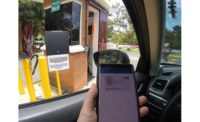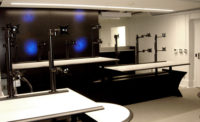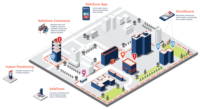The University of Antioquia (UdeA), is a public, regional, research university spread across the city of Medellín, Colombia, with University City as its main campus. The university is comprised of eight campuses, three schools, three institutes and an administrative building. It also hosts the University Museum, the University Theater, the Central Library and the university’s sports arena. Nearby is the Department of University Research (Sede de Investigación Universitaria - SIU), where specialized research projects are conducted and where the highest technological resources of the UdeA are housed.
Monitoring visitor activity and loss prevention on campus were the primary concerns for the security teams at UdeA. The main security challenge for UdeA was the theft of IT equipment from classrooms, offices and storage rooms. It was nearly impossible to determine who was responsible for the incidents, since there was no system in place to track the entry or exit of electronic devices from their assigned locations. Added to this challenge was the university’s open campus, where essentially anyone could enter the campus without be required to present identification or access control credentials.
The university did, however, possess records containing the names of all students, employees, and contractors who had been to the campus. Unfortunately, this information was housed on at least five separate databases that were not connected to one another. “Despite having a wealth of data on prior visitors, people still walked in and out of the campus and its buildings and rooms whenever they wanted, through the different entrances, with no control at all,” said Javier Toro, electronic security consultant and auditor at the University of Antioquia. “This became an issue of public safety inside the university.”
Segurtec Limited, the integrator who led the project, recognized implementing an access control system from Tyco Security Products would meet the university’s needs today and in the future, including seamless integration with the existing intrusion panels to secure six entrances on campus.
When the project began, the first step was to secure critical spaces, such as specialized classrooms and offices that contained expensive IT equipment. This was achieved with the installation of intrusion alarm panels and a video surveillance system from Tyco Security Products, integrated into one central command center for easy management by university security personnel.
Once the access control system was in place, the entire University population could be monitored. The access control system provides coverage for the entire perimeter of the University City, the library, the Extension Building, specialized classrooms and offices, including main entrances to facilities where there is a significant amount of traffic.
Concurrently, IP surveillance cameras were added all over the campus, increasing the total number of IP and analog cameras in use to more than 300.
“Our staff and faculty kept asking if we could add more cameras. Everyone is very happy with the addition of dome cameras and with the entire project. People feel safer here, which is important,” Toro said.
With the added bandwidth used by the installed IP cameras, the university added a new dedicated fiber optic system with a 10 GB speed to exclusively transmit electronic security data. The new fiber optic system was extended to the SIU research facilities, where the monitoring center is located.
Recorded video is managed using network video recorders from Tyco Security Products, with a dedicated communications rack that holds 10 servers to provide approximately 70 terabytes in storage capacity and operate all of the systems (software, applications and database). According to Toro, some of the servers are used to process the daily data workload and others are used for redundant storage.
From the university’s control center, security staff can monitor video throughout the campus. A video wall and smaller video screens throughout the control center enable staff to consistently monitor the campus, and integrates with the access control system to provide a clear picture on events. The system currently covers the main campus and extension course building, with plans to extend the video management system to cover the library and a museum on campus.



